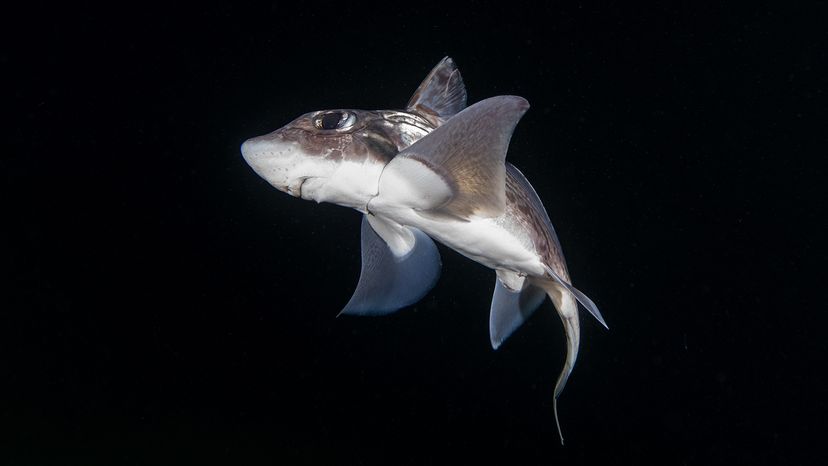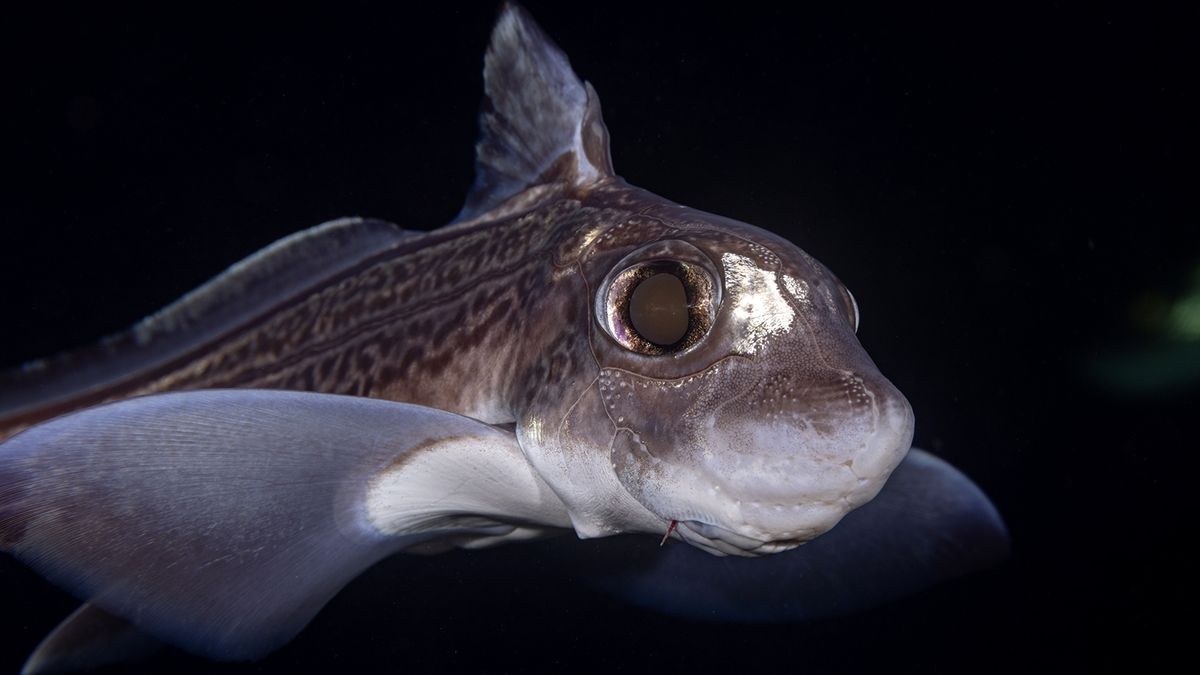
Despite their spooky nickname, ghost sharks aren’t actually sharks. They’re members of the Chimaera family, a group of fishes that split off from sharks more than 400 million years ago.
They have long, tapering bodies, a protruding snout and two dorsal fins. The pectoral and pelvic fins look almost wing-like, giving them an eerie, gliding motion through the water.
One of their standout features is a reflective tissue layer over their eyes, perfect for navigating low light conditions in the deep sea.
Ghost sharks also possess retractable sexual appendages on their foreheads — yes, really — which scientists believe play a role in reproduction for male chimaeras.











